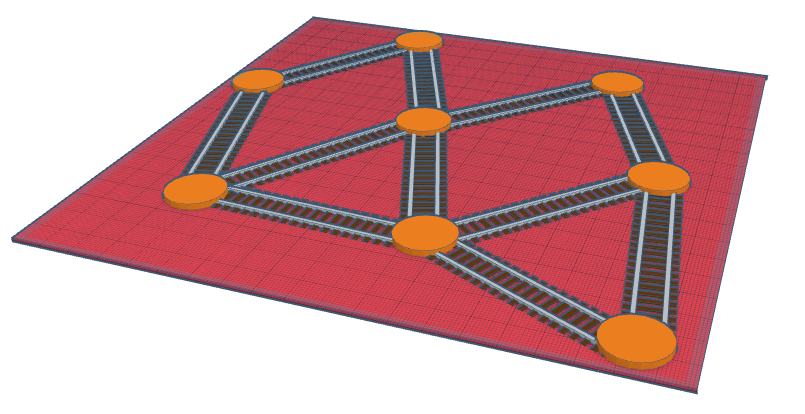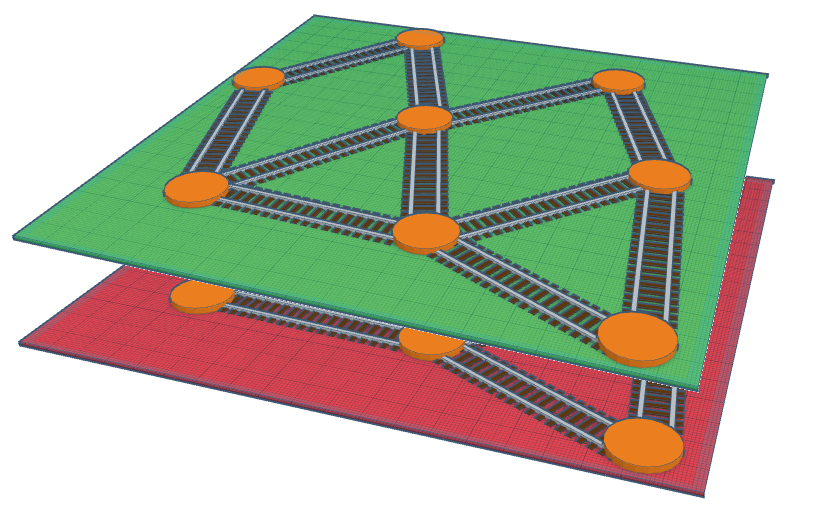Foundations of Distributed Ledger Technology Part 3: DLT Components
DLT Foundations
18th March 2024.
Updated on 5th August 2024:
- Added Permissioned VS Perminssionless DL
- Added Zero-Knowledge Proof
- Added Explanation of distributed and decentralized infrastructure
Updated on 7th July 2025: Added some information about sharding.

In part one and in part two I explained what a DLT is and what it does; a way for computers to reach consensus about something. This part will look on some further details about DLT. It will also explain some common components used in the DLT world.
Why am I writing about DLT in the first place? Most distributed ledgers are open source!
Note: In the end of Part 2 I explained the difference between the terms blockchain and distributed ledger. I may use the word “blockchain” as a synonym for “DL”, just because that word is more familiar to people. Just know that when I speak in general about blockchain technology, I really mean DLT. If you can’t beat them, join them.
The Meaning of Distributed and Decentralized Infrastructure
In the blockchain world we talk a lot about decentralized infrastructure, so why is it called Distributed Ledgers Technology? Let’s take a look at this picture from a computer science paper, authored by Paul Baran in the 60’s:
Explanation:
Centralized infrastructure is when everything is relying on a central entity for communication to work. Most of today’s applications rely on this architecture, including privacy apps like Signal. The security and integrity of the app depends solely on who’s in charge.
Decentralized infrastructure is when there are multiple entities working together to forward traffic from their clients. This creates a bit of a competition; if you don’t like the node you are connected to, you can choose another. The social network called mastodon is a good example of a decentralized network.
Distributed infrastructure is when there aren’t any central nodes at all. Any node can speak directly to any other node. It would be awesome if every app worked like this, but it is very complicated to scale and therefore not possible, yet.
Most applications running over a distributed ledger are doing decentralized communication. That is why we called it Decentralized Finance (covered in part 4) and Decentralized applications (covered in part 6). But the validator nodes are part of a distributed network. That is why it is called a Distributed Ledger. However there are a few apps that are doing distributed communication. One of them is Jami.
Overview of blockchain infrastructure
To explain DeFi and other blockchain components; Imagine different railroad infrastructures with trains and cars.
The railroads and the locomotives represents different blockchain/ledger networks. These are not compatible with each other, because the tracks and the locomotives have different properties. The trains are fueled by the networks native token. The exhaust represent the gas fee. Inside the cars are other tokens, like crypto currencies, NFTs or other decentralized application data (DApps).
The Bitcoin railroad infrastructure were up until recently only transporting bitcoins. But with the taproot upgrade, it is now able to transport other tokens and DApps. I just don’t know of any examples.
The Ethereum railroad infrastructure was designed with a broader financial ecosystem in mind. Therefore it could transport different kinds of tokens from the start. What is worth mentioning is that all tokens transported on the same network can share the same destination address (but please, double-check every time you do a transaction anyway). CBDC could theoretically also be transported on the Ethereum Blockchain, but seems unlikely at this point.
The Hedera railroad infrastructure can also transport different types of tokens, but does so in a very high speed. CBDC could be transported over this network too, but I have yet to hear if it will be, or if it will ever become accepted. My perception of Hederas railroad is that it has this super fast infrastructure, but not too many cars in transport at the moment. I don’t know why Hedera isn’t getting more attention.
Updated: CBDC will most likely be run on a permissioned blockchain that is not open source, and only a certain group of people would have control over the network. More about CBDC in part 4.
Difference between Permissioned and Permissionless Blockchain
Permissionless
Bitcoin and Ethereum are examples of permissionless ledgers. That means that anyone can join, the blockchain network and perform any functions, as long as they have the compute power for it. Like becoming a validator for example.
Permissionless ledgers benefit is their openess and transparency, but might become slow when growing.
Permissioned
Hedera Hashgraph is, at the moment, a permissioned ledger but they have plans to become a permissionless ledger in the future. Hedera Hashgraph is at least fully open sourced.
In a permissioned ledger there are certain functions that only administrators are allowed to do. For example, only the Hederas Governing council are allowed to participate in validation of transactions and vote on changes to the ledger. The fact that Hedera has chosen this path may have slowed it’s adoption. If it becomes permissionless, it may reduce in skepticism and increase in adoption.
The biggest challenge with permissioned blockchains is the risk of getting corrupted people exploiting their powers to benefit themselves. They still have their use-cases, like for example if you are running a private blockchain within an organization. They are usually much quicker than permissionless blockchains but the trade-off is less decentralization.
Layer 1 Blockchains
Layer 1 blockchains is what is represented in the train analogy above. It is responsible for writing the events or transactions into the ledger. But with for example the bitcoin blockchain, it suffers greatly from scalability problems. There is something called the “scalability trilemma”, which refers to the very difficult challenge of making a distributed ledger that simultaneously achieves Scalability, Decentralization and Security.
Dealing with layer 1 scalability issues
Change the Consensus algorithm
Making changes to the consensus algorithm are risky business. Ethereum however, decided to migrate from a PoW to a PoS algorithm (see part 2). It is now significantly faster than bitcoin, but still not as fast as for example Solana or Hedera. Instead of a transaction taking hours to complete, it can take a few minutes.
Sharding
The other way of dealing with layer 1 scalability issues is called sharding. It involves splitting up transactions into smaller data sets. In other words: it divides up the network into hierarchical groups that can process transaction in parallel.
This concept was first seen in the popular MMORPG World of Warcraft, where players were divided into multiple servers (shards) due to scalability constraints. As development progressed, in later versions of the game it was possible for players on different servers to play together (inter-shard communication).
It is not without downsides however. There are security concerns like single shard takeover, and clients can’t communicate with other clients in another shard, without special inter-shard communication mechanisms.
A single shard takeover can happen if the consensus algorithm inside a shard gets compromised, resulting in an attacker getting control over the entire group of nodes. It’s easier to get control over a small consensus node network, than a bigger one.
UPDATE: From an interview with Vitalik Buterin, I learned that a single shard takeover attack can be mitigated through random assignment of validators, making the attackers more or less evenly spread out on all shards.
Even with changing the consensus algorithm and implementing sharding, it only goes so far. Layer 2 blockchains are yet another solution to increase scalability.
Layer 2 blockchains
A layer 2 blockchain is an entirely different blockchain that works in parallel to the layer 1 blockchain. This network doesn’t even have to share the same consensus algorithm. The records are later transferred to the layer 1 blockchain to ensure they are immutably recorded.
Examples of Layer 2 Blockchains are Bitcoin’s Lightning Network or Ethereum’s Polygon network. These blockchains dramatically increases scalability, but are they as secure? These technologies are so new that nobody can tell for sure. Although this kind of scaling makes a big difference, it still relies on the underlying infrastructure, or the so called “mainnet network”.
Zero-Knowledge Proof
ZKP = Zero-Knowledge Proof are cryptographic protocols that prevent eavesdropping and protects the integrity of sensitive data. The most common way to perform encrypted communication today is through public key exchange.
ZKP however goes beyond just encrypting data: In abstract, it enables one person (the prover) to convince another (the verifier) that a particular claim is true without disclosing any details about the claim itself. In other words:
“I see you have a problem. I guarantee you that I have the solution for it, but I won’t show any details about it to you”
That is quite the claim. So how am I (the prover) going to convince you (the verifier) that I actually have the solution to your problem? From cointelegraph:
"The prover and verifier interact in multiple rounds of the protocol [ZKP], and in the conclusion, the verifier develops confidence in the veracity of the claim without learning any additional information about the secret."
Note: Veracity = Level of probability of a presented truth actually being true.
Basically I will demonstrate my solution to you repeatedly until you conclude that whatever secret sauce I have come up with, it seems to work every time.
To visualize this: Cointelegraphs example with map coloring is good (see link above), I suggest you read that one in addition, but i think I have an even simpler explanation, although it might be oversimplifying it:
It’s kinda like playing a one-way game of “Guess Who”. The Verifier continously ask questions about characteristics, until the Verifier is absolutely sure who it is, without the prover actually ever revealing the identity of the person.
This is an example of interactive ZKP where transactions are repeated until high enough veracity is reached. In non-interactive ZKP, you have to prove your claim in only one transaction.
ZKP use-cases
ZKP is used in various use-cases involving DLT:
It provides anonymous crypto currency transactions*. With privacy-focused coins like Zcash (ZEC), both wallet and the amount in a transaction can be hidden. You can also prove that you have sufficient funds on your account, but without revealing exactly how much you have.
You can validate that a user has entered the correct password without knowing what the password actually is.
Safer electronic voting by proving that you voted, but not for who or what you voted for. Blockchain technology also increases the integrity of the voting system by not relying on a central authority.
Note: While I’m all for privacy and if you want to hide your transaction details, that’s your business. However, utilizing ZKP for everything can complicate things. Not being able to easily validate who paid who and how much can be a nightmare for accountants. In my opinion, regular transparent blockchains like Bitcoin or Ethereum have a good balance between privacy and convenience.
Smart Contracts
Smart contracts were introduced with the Ethereum blockchain. However, today it is available on most blockchains including Bitcoin, after the taproot upgrade. It is essential for NFTs, DeFi and DApps to work. When you look under the hood, smart contracts are nothing more than code written on blockchains that contains a set of “if… then…” statements. When a certain criteria is met, the code, or the smart contract, is executed. It might sound underwhelming (it’s just code?), but it has a lot of potential.
In Ethereums case, smart contracts are written in a program language called Solidity, which is Turing-complete. This means that the rules and limitations of smart contracts are built into the network’s code, and no bad actor can manipulate such rules.
Note: I recommend the video about smart contracts on cointelegraphs website.
Benefits of Smart Contracts
The main benefit of smart contracts is that it eliminates the middlemen when dealing with tasks that would otherwise require contract signing. As long as the code is written in a way that is transparent for both parties, it saves time, money and eliminates the risk of a manipulating third party.
Note: Some might think that letting computers decide the outcome of disputes could be concerning. Having personally dealt with the legal system, I take my chances with a cold rational unbiased computer algorithm above any judge.
Use Cases for Smart Contracts
Whenever you need to run an application on a blockchain, you will need a smart contract. Some popular use-cases are listed below:
Layer 2 blockchains
DAO = Decentralized Autonomous Organizations (covered in part 5)
Overall, smart contracts could greatly reduce our reliance on bankers, brokers, politicians, real-estate agents and lawyers in the future.
Now you have a basic understanding of some of the components in a blockchain. The next part will address components of DeFi = Decentralized Finance. Because that topic is so big, it deserves a post by itself.
Special Mentions
I want to thank all the authors at Cointelegraph.com. Your articles are worth gold when learning about DLT.









